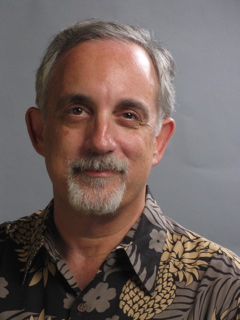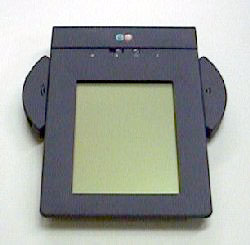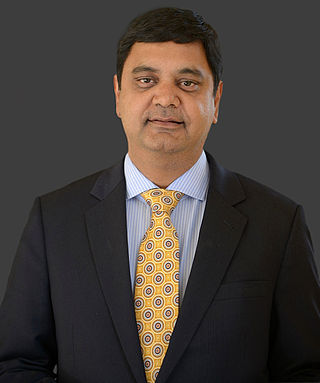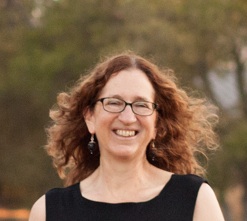
MIPS Tech LLC, formerly MIPS Computer Systems, Inc. and MIPS Technologies, Inc., is an American fabless semiconductor design company that is most widely known for developing the MIPS architecture and a series of RISC CPU chips based on it. MIPS provides processor architectures and cores for digital home, networking, embedded, Internet of things and mobile applications.

Mitchell David Kapor is an American entrepreneur best known for his work as an application developer in the early days of the personal computer software industry, later founding Lotus, where he was instrumental in developing the Lotus 1-2-3 spreadsheet. He left Lotus in 1986. In 1990 with John Perry Barlow and John Gilmore, he co-founded the Electronic Frontier Foundation, and served as its chairman until 1994. In 2003, Kapor became the founding chair of the Mozilla Foundation, creator of the open source web browser Firefox. Kapor has been an investor in the personal computing industry, and supporter of social causes via Kapor Capital and the Kapor Center. Kapor serves on the board of SMASH, a non-profit founded by his wife, Freada Kapor Klein, to help underrepresented scholars hone their STEM knowledge while building the networks and skills for careers in tech and the sciences.
Lotus Software was an American software company based in Massachusetts; it was "offloaded" to India's HCL Technologies in 2018.

Vinod Khosla is an Indian-American billionaire businessman and venture capitalist. He is a co-founder of Sun Microsystems and the founder of Khosla Ventures. Khosla made his wealth from early venture capital investments in areas such as networking, software, and alternative energy technologies. He is considered one of the most successful and influential venture capitalists.
The PenPoint OS was a product of GO Corporation and was one of the earliest operating systems written specifically for graphical tablets and personal digital assistants. It ran on AT&T Corporation's EO Personal Communicator as well as a number of Intel x86 powered tablet PCs including IBM's ThinkPad 700T series, NCR's 3125, 3130 and some of GRiD Systems' pen-based portables. It was never widely adopted.

GO Corporation was founded in 1987 to create portable computers, an operating system, and software with a pen-based user interface. It was famous not only for its pioneering work in Pen-based computing but as well as being one of the most well-funded start-up companies of its time.

NEC Corporation is a Japanese multinational information technology and electronics corporation, headquartered at the NEC Supertower in Minato, Tokyo, Japan. It provides IT and network solutions, including cloud computing, artificial intelligence (AI), Internet of Things (IoT) platform, and telecommunications equipment and software to business enterprises, communications services providers and to government agencies, and has also been the biggest PC vendor in Japan since the 1980s when it launched the PC-8000 series.

SRI International (SRI) is an American nonprofit scientific research institute and organization headquartered in Menlo Park, California. The trustees of Stanford University established SRI in 1946 as a center of innovation to support economic development in the region.

The EO is an early commercial tablet computer that was created by Eo Inc. y GO Corporation(later acquired by AT&T Corporation), and released in April 1993. Eo is the hardware spin-out of GO. Officially named the AT&T EO Personal Communicator, it is similar to a large personal digital assistant with wireless communications, and competed against the Apple Newton. The unit was produced in conjunction with David Kelley Design, frog design, and the Matsushita, Olivetti and Marubeni corporations.

Kai-Fu Lee is a Taiwanese businessman, computer scientist, investor, and writer. He is currently based in Beijing, China.

Freada Kapor Klein is an American venture capitalist, social policy researcher and philanthropist. As a partner at Kapor Capital and the Kapor Center for Social Impact, she is known for efforts to diversify the technology workforce through activism and investments. Her 2007 book Giving Notice: Why the Best and the Brightest Leave the Workplace and How You Can Help Them Stay examines the reasons people have for leaving corporate America as well as the human and financial cost.

Sevin Rosen Funds (SRF) is a Texas-based venture capital firm credited with pioneering the personal computing revolution in the 1980s and also venture investing in Dallas. It was established in 1981 by L. J. Sevin, a former Texas Instruments engineer, and Ben Rosen, and was one of the leading investors on the US West Coast.

A tablet computer, commonly shortened to tablet, is a mobile device, typically with a mobile operating system and touchscreen display processing circuitry, and a rechargeable battery in a single, thin and flat package. Tablets, being computers, have similar capabilities, but lack some input/output (I/O) abilities that others have. Modern tablets largely resemble modern smartphones, the only differences being that tablets are relatively larger than smartphones, with screens 7 inches (18 cm) or larger, measured diagonally, and may not support access to a cellular network. Unlike laptops, tablets usually run mobile operating systems, alongside smartphones.

Pen computing refers to any computer user-interface using a pen or stylus and tablet, over input devices such as a keyboard or a mouse.
FutureWave Software, Inc was a software development company based in San Diego, California. The company was co-founded by Charlie Jackson and Jonathan Gay on January 22, 1993. VP of Marketing was Linda Michelle Alsip, who also came from Silicon Beach Software, then Aldus Corporation.
Barney Pell is an American entrepreneur, angel investor and computer scientist. He was co-founder and CEO of Powerset, a pioneering natural language search startup, search strategist and architect for Microsoft's Bing search engine, a pioneer in the field of general game playing in artificial intelligence, and the architect of the first intelligent agent to fly onboard and control a spacecraft. He was co-founder, Vice Chairman and Chief Strategy Officer of Moon Express; co-founder and chairman of LocoMobi; and Associate Founder of Singularity University.
Ciright Systems is an information technology services company based in West Conshohocken, Pennsylvania United States. Its flagship product is a Platform As A Service (PaaS) based Interoperable Cloud Platform that provides office and business automation to small and medium-sized businesses. The Ciright Platform also provides immediate mobile extendability to an enterprise's legacy system.
The history of tablet computers and the associated special operating software is an example of pen computing technology, and thus the development of tablets has deep historical roots. The first patent for a system that recognized handwritten characters by analyzing the handwriting motion was granted in 1914. The first publicly demonstrated system using a tablet and handwriting recognition instead of a keyboard for working with a modern digital computer dates to 1956.

Gunjan Sinha is an Indian-American entrepreneur and business executive. He is the Executive Chairman of MetricStream. He is also best known as the founder of WhoWhere?, an internet search engine he sold to Lycos in 1998. He is also the co-founder of customer engagement software provider eGain Corporation. He has served on the board of numerous Silicon Valley startups including Regalix, OpenGrowth, DesignEverest.

Celeste Suzanne Baranski is an American electronic engineer, entrepreneur, and executive who helped create several pioneering electronic devices including early versions of the tablet computer. Baranski, with her colleague Alain Rossmann, won the Discover Award from Discover Magazine in 1993.















